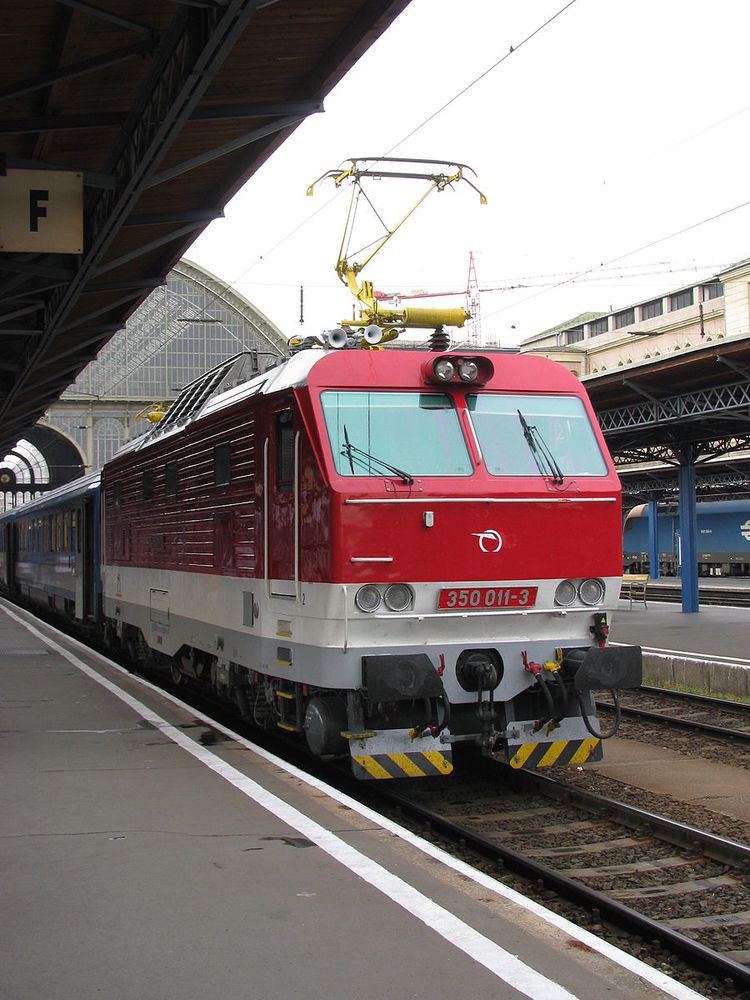Status Operational Former operator(s) ČSD, DR, MÀV | Current operator(s) ČD, DB, MÀV, ZSSK | |
 | ||
First service 29 May 1960 (1960-05-29) | ||
Hungaria (Hungária) is a EuroCity train which runs between Budapest Keleti and Berlin Hauptbahnhof, currently running with coaches of MÁV. It is numbered as EC 170-171 and runs daily, mainly with MÁV owned rolling stocks.
Contents
History
Earlier numbering included EC 174-175, IEx 74/75 and Ex 154/155.
The Hungaria international express train is one of the oldest express trains still in operation. Its first run between Budapest and Berlin via Prague was on 29 May 1960 with a diesel locomotive. It was the first train in the former Czechoslovakia which reached a speed of 130 km/h.
During the 1970s it ran as an express train between the capitals of Hungary and East Germany under train numbers Ex 154/155. Electric locomotives were introduced in this period. The capacity of these locomotives just reached the necessary level.
There were further improvements in the 1980s. MÁV planned to introduce a high level, international rail service with other railway companies of the Eastern Bloc. The Interexpress alliance was founded with the membership of the Czechoslovakian ČSD, Polish PKP, Hungarian and East German DR. The contract was signed in 1986, one year before the establishment of the Western European EuroCity network. In the timetable year of 1986 the Hungaria became an interexpress train with train numbers IEx 74/75. At this time the train terminated in East Berlin, at Berlin-Lichtenberg station, the main railway station of the city. During the next two years it had direct rolling stocks to and from Vienna and in the summer period to Malmö. During this period and usually on Hungarian territories it used the MÁV V63 locomotives.
The Interexpress network was dissolved after the regime change in Eastern Europe, so Hungaria was operated out of this system’s scope.
Nowadays
The current system was implemented together with the EuroCity system in 1993. Its termination in Hungary is Keleti Railway Station in Budapest. The train consists of 9 carriages, of which 2 are first class, 6 second-class and 1 bistro car. All of them are provided by MÁV.
It is usually driven between Budapest and Prague by ZSSK’s ŽSSK 350 (nicknamed Gorilla) 25 kV AC/3 kV DC locomotive. In this way there is no need to change locomotive at the Hungarian-Slovak or at the Czech-Slovak border. Between Prague and Dresden there is a ČSD 371 high speed 15 kV AC/3 kV DC locomotive at the front of the train. For last part of the route, between Dresden and Berlin there is usually a DB 101 high speed 15 kV AC locomotive in use.
All carriages are equipped with seats, all of them are able to run in a 200 km/h speed, they are air conditioned and it is possible to reserve a seat for an extra charge. First class carriages Apmz types, second class ones are of the Bmz type. There is a direct carriage between Prague and Budapest operated by ČD.
